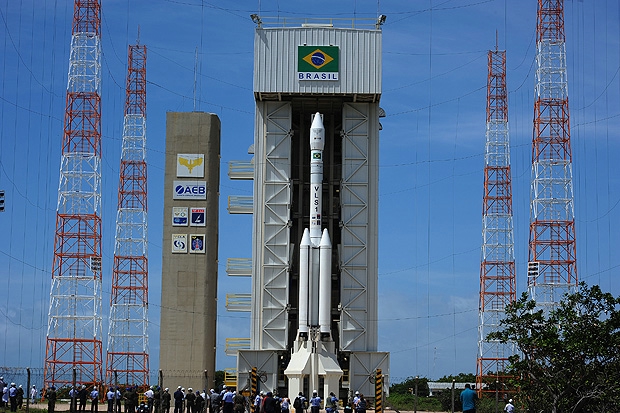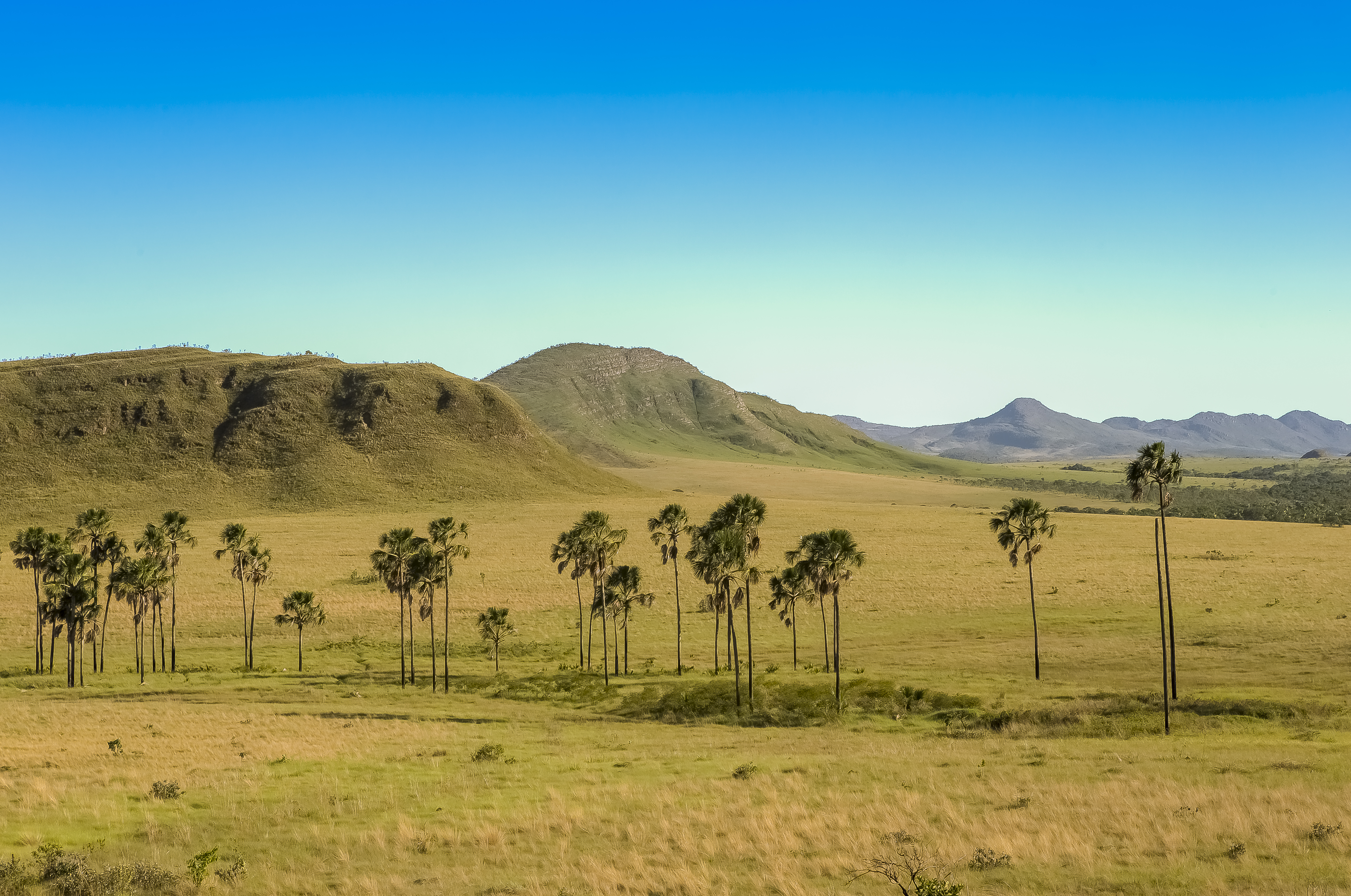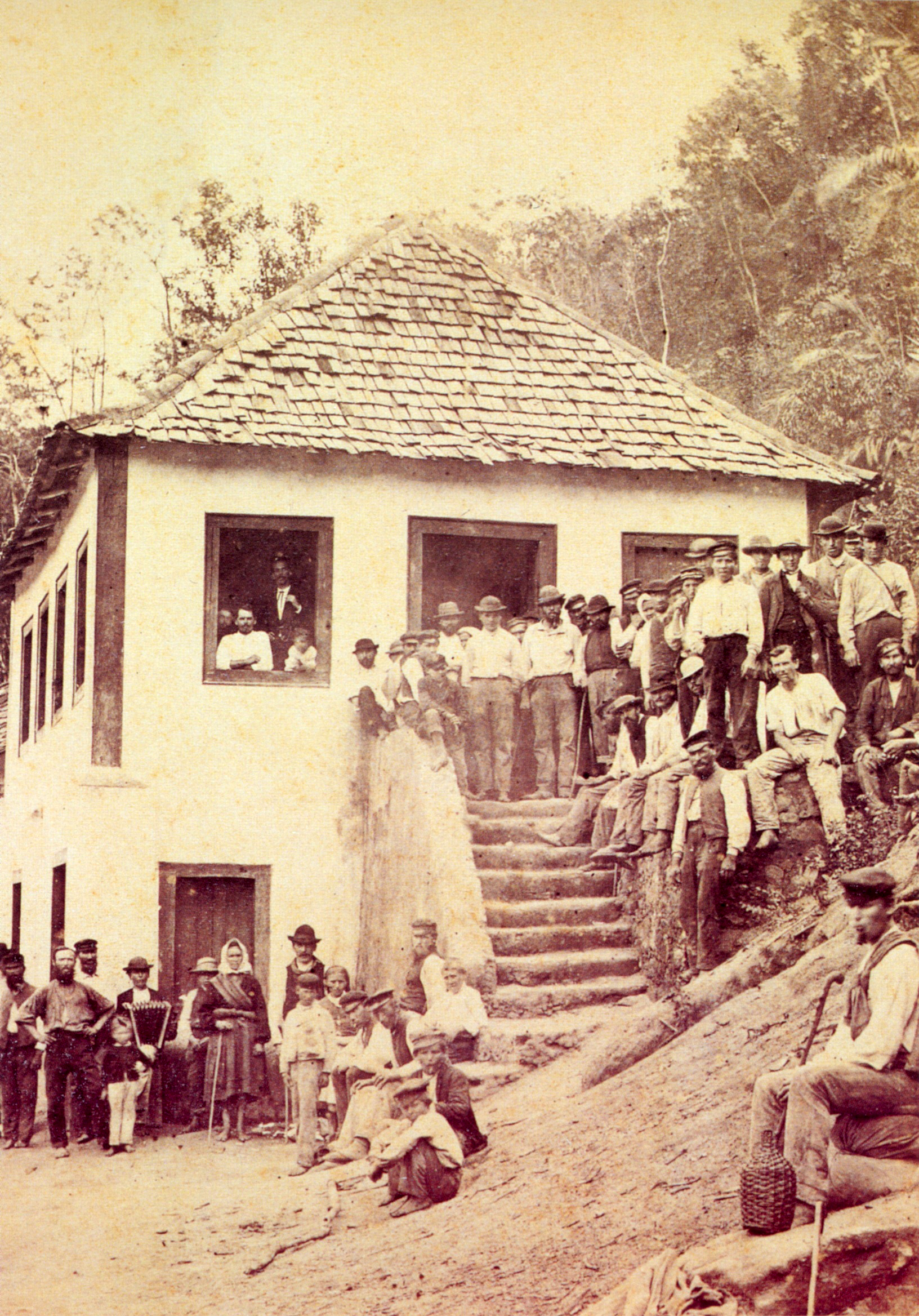|
Brazilian Volleyball Confederation
The Brazilian Volleyball Confederation () is the governing body of volleyball and beach volleyball in Brazil. Formed in 1954, its headquarters are in Barra da Tijuca, Rio de Janeiro. The CBV is a member of the International Volleyball Federation (FIVB) and the South American Volleyball Confederation (CSV) and it is affiliated to the Brazilian Olympic Committee. It organizes both the men's and women's Brazilian Volleyball Superleague, which are the top level's volleyball competition in Brazil, and also organizes the Salonpas Cup, which is an international women's club cup competition played annually in Brazil. The organization also administrates the Brazil men's national volleyball team and the Brazil women's national volleyball team. Tournaments * Brazilian Volleyball Superleague * Brazilian Volleyball Cup * Brazilian Volleyball Supercopa Presidents Below is a list of all CBV presidents: Affiliated state federations All the Brazilian state federations are affiliated to th ... [...More Info...] [...Related Items...] OR: [Wikipedia] [Google] [Baidu] |
Volleyball
Volleyball is a team sport in which two teams of six players are separated by a net. Each team tries to score points by grounding a ball on the other team's court under organized rules. It has been a part of the official program of the Summer Olympic Games since Tokyo 1964. Beach volleyball was introduced to the program at the Atlanta 1996 Summer Olympics. The adapted version of volleyball at the Summer Paralympic Games is sitting volleyball. Basic play The complete set of rules is extensive, but play essentially proceeds as follows: a player on one of the teams begins a 'rally' by serving the ball (tossing or releasing it and then hitting it with a hand or arm), from behind the back boundary line of the court, over the net, and into the receiving team's court. The receiving team must not let the ball be grounded within their court. The team may touch the ball up to three times to return the ball to the other side of the court, but individual players may not touch th ... [...More Info...] [...Related Items...] OR: [Wikipedia] [Google] [Baidu] |
Supercopa Brasileira De Voleibol
Supercopa can refer to: *Supercopa de España (other) *Supercopa do Brasil, a Brazilian football (soccer) competition. *Supercopa Honduras, a defunct Honduran football (soccer) competition. *Supercopa de Costa Rica, a Costa Rican Football (soccer) competition. *Copa Master de Supercopa, a defunct South American football (soccer) competition. *Supercopa Libertadores The Supercopa Libertadores (English: ''Libertadores Supercup''), also known as the Supercopa Sudamericana, Supercopa Libertadores João Havelange, Supercopa João Havelange or simply Supercopa, was a football club competition contested annually b ..., a defunct South American football (soccer) competition. {{disambig fr:Supercoupe zh:超級盃 ... [...More Info...] [...Related Items...] OR: [Wikipedia] [Google] [Baidu] |
Maranhão
Maranhão () is a States of Brazil, state in Brazil. Located in the country's Northeast Region, Brazil, Northeast Region, it has a population of about 7 million and an area of and it is divided into 217 municipalities. Clockwise from north, it borders on the Atlantic Ocean for 2,243 km and the states of Piauí, Tocantins and Pará. The people of Maranhão have a distinctive accent within the common Northeastern Brazilian dialect. Maranhão is described in literary works such as ''Canção do exílio, Exile Song'' by Gonçalves Dias and ''Casa de Pensão'' by Aluísio Azevedo. The dunes of Lençóis Maranhenses National Park, Lençóis are an important area of environmental preservation. Also of interest is the state capital of São Luís, Maranhão, São Luís, which is a UNESCO World Heritage Site. Another important conservation area is the Parnaíba River delta, between the states of Maranhão and Piauí, with its lagoons, desert dunes and deserted beaches or islands, suc ... [...More Info...] [...Related Items...] OR: [Wikipedia] [Google] [Baidu] |
Goiás
Goiás () is a Brazilian States of Brazil, state located in the Central-West Region, Brazil, Central-West region. Goiás borders the Federal District (Brazil), Federal District and the states of (from north clockwise) Tocantins, Bahia, Minas Gerais, Mato Grosso do Sul and Mato Grosso. The state capital is Goiânia. With 7.2 million inhabitants, Goiás is the most populous state in the Central-West region and the List of Brazilian states by population, 11th most populous in the country. It has the List of Brazilian federative units by gross regional product, ninth largest economy among Brazilian federative units. In Brazil's geoeconomic division, Goiás belongs to the Centro-Sul (Center-South), being the northernmost state of the southern portion of Brazil. The state has 3.3% of the Brazilian population and is responsible for 2.7% of the Brazilian GDP. The history of Goiás dates back to the beginning of the 18th century, with the arrival of pioneers from São Paulo. The Rio Verm ... [...More Info...] [...Related Items...] OR: [Wikipedia] [Google] [Baidu] |
Espírito Santo
Espírito Santo (; ) is a state in southeastern Brazil. Its capital is Vitória, and its largest city is Serra. With an extensive coastline, the state hosts some of the country's main ports, and its beaches are significant tourist attractions. The state is divided into 78 municipalities. The capital, Vitória, is located on an island, which borders the municipalities of Vila Velha, Cariacica, and Serra. These municipalities, plus the outer cities of Fundão and Guarapari, constitute the state's main metro area. In the northern extremes of Espírito Santo is Itaúnas, in the municipality of Conceição da Barra, which is a tourist location known for its sand dunes and forró tradition. The Captaincy of Espírito Santo was carved out of the Captaincy of Bahia in the 18th century, during the colonial rule of Brazil, and named after a 16th-century captaincy covering roughly the same area of coast. Following the elevation of Brazil to a constituent kingdom of the Un ... [...More Info...] [...Related Items...] OR: [Wikipedia] [Google] [Baidu] |
Federal District (Brazil)
The Federal District ( ) is one of 27 States of Brazil, federative units of Brazil. Located in the Central-West Region, Brazil, Center-West Region, it is the List of Brazilian states by area, smallest Brazilian federal unit and the only one that has no List of municipalities of Brazil, municipalities, being divided into 35 administrative regions of the Federal District (Brazil), administrative regions. The federal Capital city, capital of Brazil, Brasília, which is also the capital city, seat of government of the Federal District, is located in its territory. The Federal District is almost completely surrounded by the state of Goiás, but it shares a small border with Minas Gerais. History From the first republican constitution there was already a device that foresaw the move of the federal capital from Rio de Janeiro, at that time in the former Federal District of Brazil (1891–1960), Federal District (1889–1960), to the interior of the country. In 1891 the Exploration Commi ... [...More Info...] [...Related Items...] OR: [Wikipedia] [Google] [Baidu] |
Ceará
Ceará (, ) is one of the 26 states of Brazil, located in the Northeast Region, Brazil, northeastern part of the country, on the Atlantic Ocean, Atlantic coast. It is the List of Brazilian states by population, eighth-largest Brazilian State by population and the List of Brazilian states by area, 17th by area. It is also one of the main tourist destinations in Brazil. The List of capitals in Brazil, state capital is the city of Fortaleza, the country's fourth most populous city. The state has 4.3% of the Brazilian population and produces 2.1% of the Brazilian GDP. It is divided into 184 municipalities. Literally, the name ''Ceará'' means "sings the Aratinga, jandaia". According to José de Alencar, one of the most important writers of Brazil and an authority in Tupi Guaraní, ''Ceará'' means turquoise or green waters. The state is best known for its extensive coastline, with of sand. There are also mountains and valleys producing tropical fruits. To the south, on the border o ... [...More Info...] [...Related Items...] OR: [Wikipedia] [Google] [Baidu] |
Bahia
Bahia () is one of the 26 Federative units of Brazil, states of Brazil, located in the Northeast Region, Brazil, Northeast Region of the country. It is the fourth-largest Brazilian state by population (after São Paulo (state), São Paulo, Minas Gerais, and Rio de Janeiro (state), Rio de Janeiro) and the 5th-largest by area. Bahia's capital is the city of Salvador, Bahia, Salvador (formerly known as "Cidade do São Salvador da Bahia de Todos os Santos", literally "City of the Holy Savior of the Bay of All the Saints"), on a Spit (landform), spit of land separating the Bay of All Saints from the Atlantic. Once a stronghold of supporters of direct rule of Brazil by the Portuguese monarchy, and dominated by Agriculture in Brazil, agricultural, Slavery in Brazil, slaving, and ranching interests, Bahia is now a predominantly Working class, working-class industrial and agricultural state. The state is home to 7% of the Brazilian population and produces 4.2% of the country's GDP. It is ... [...More Info...] [...Related Items...] OR: [Wikipedia] [Google] [Baidu] |
Amapá
Amapá (; ) is one of the 26 federative units of Brazil, states of Brazil. It is in the North Region, Brazil, North Region of Brazil. It is Federative units of Brazil#List, the second-least populous state and the eighteenth-largest state by area. Located in the far northern part of the country, Amapá is bordered clockwise by French Guiana to the north for 730 km, the Atlantic Ocean to the east for 578 km, Pará to the south and west, and Suriname to the northwest for 63 km. The capital and largest city is Macapá. The state has 0.4% of the Brazilian population and is responsible for only 0.22% of the Brazilian gross domestic product, GDP. In the colonial period the region was called Portuguese Guiana and was part of Portuguese Empire, Portugal's State of Brazil. Later, the region was distinguished from the other The Guianas, Guianas. Amapá was once part of Pará, but became a separate territory in 1943, and the decision to make it a state was made in 1988. The first state legis ... [...More Info...] [...Related Items...] OR: [Wikipedia] [Google] [Baidu] |
Amazonas (Brazilian State)
Amazonas () is a federative units of Brazil, state of Brazil, located in the North Region, Brazil, North Region in the north-western corner of the country. It is the Federative units of Brazil#List, largest Brazilian state by area and the list of the largest country subdivisions by area, ninth-largest country subdivision in the world with an area of 1,570,745.7 square kilometers. It is the largest country subdivision in South America, being greater than the areas of Chile, Paraguay, and Uruguay combined. Neighbouring states are (from the north clockwise) Roraima, Pará, Mato Grosso, Rondônia, and Acre (state), Acre. It also borders the nations of Peru, Colombia and Venezuela. This includes the departments of Colombia, Departments of Amazonas (Colombian department), Amazonas, Vaupés Department, Vaupés and Guainía Department, Guainía in Colombia, as well as the Amazonas State, Venezuela, Amazonas state in Venezuela, and the Loreto Region in Peru. Amazonas is named after the A ... [...More Info...] [...Related Items...] OR: [Wikipedia] [Google] [Baidu] |
Alagoas
Alagoas () is one of the 27 federative units of Brazil and is situated in the eastern part of the Northeast Region, Brazil, Northeast Region. It borders: Pernambuco (N and NW); Sergipe (S); Bahia (SW); and the Atlantic Ocean (E). Its capital is the city of Maceió. It has 1.6% of the Brazilian population and produces 0.8% of the Brazilian GDP. It is made up of 102 Municipalities of Brazil, municipalities and its most populous cities are Maceió, Arapiraca, Palmeira dos Índios, Rio Largo, Penedo, União dos Palmares, São Miguel dos Campos, Santana do Ipanema, Delmiro Gouveia, Coruripe, and Campo Alegre, Alagoas, Campo Alegre. It is the second smallest Brazilian state in area (larger only than Sergipe) and it is List of Brazilian states by population, 16th in population. It is also one of the largest producers of sugarcane, coconuts, and natural gas in the country. Alagoas also has oil exploration, mostly of onshore deposits. Initially, the territory of Alagoas constituted the s ... [...More Info...] [...Related Items...] OR: [Wikipedia] [Google] [Baidu] |
Acre (state)
Acre () is a state located in the west of the North Region of Brazil and the Amazonia Legal. Located in the westernmost part of the country, at a two-hour time difference from Brasília, Acre is bordered clockwise by the Brazilian states of Amazonas and Rondônia to the north and east, along with an international border with the Bolivian department of Pando to the southeast, and the Peruvian regions of Madre de Dios, Ucayali and Loreto to the south and west. Its capital and largest city is Rio Branco. Other important places include Cruzeiro do Sul, Sena Madureira, Tarauacá and Feijó. The state, which has 0.42% of the Brazilian population, generates 0.2% of the Brazilian GDP. Intense extractive activity in the rubber industry, which reached its height in the early 20th century, attracted Brazilians from many regions to the state. From the mixture of sulista, southeastern Brazil, nordestino, and indigenous traditions arose a diverse cuisine. Fluvial trans ... [...More Info...] [...Related Items...] OR: [Wikipedia] [Google] [Baidu] |





